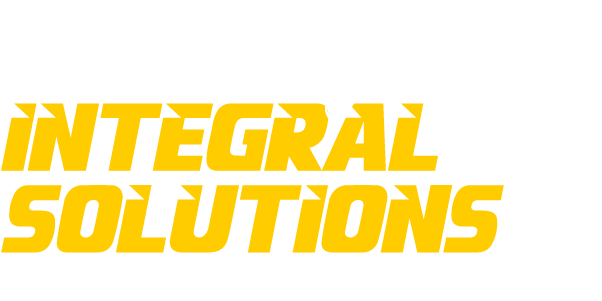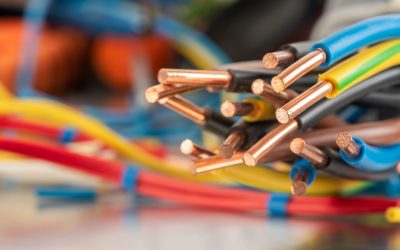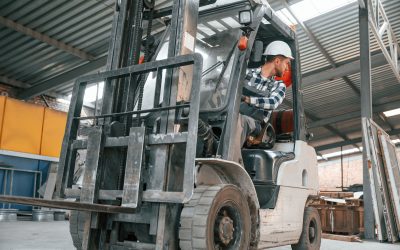The installation of industrial piping is a process that is worked with great attention and precision in many industries. This is because it ensures the correct circulation of fluids, gases and other materials that are essential for the operation of a plant. Such a process involves not only the installation of pipes, but also meticulous planning, selection of suitable materials, integration with other systems and setting up connections and valves that ensure a safe and efficient operation.
In this blog, we will briefly explain the main stages in industrial piping installation, from planning to start-up, and how proper execution can improve operational efficiency in both mechanical and electrical industries.
The importance of industrial piping installation
The correct installation of piping is a very important process that guarantees the continuous and safe flow of materials within an industrial plant. Pipelines transport liquids and gases that can be vital for different industrial processes. This means that any error in their installation can have serious consequences, for example leaks, explosions or disruptions in productivity. In addition, an efficient and well-planned installation can contribute significantly to the optimization of energy resources and the reduction of operating costs.
The design and installation of primary services in industrial plants, such as water, gas, or heat, requires a high level of precision and specialized knowledge. Here are the key steps to a successful installation.
Phase 1: Project Planning
The industrial piping installation process begins with a rigorous planning phase. During this stage, engineers and technicians evaluate the specific needs of the plant, considering factors such as the type of material to be transported, working pressure, environmental conditions and current safety regulations.
Material selection is one of the first crucial steps in this phase. Depending on the type of industry and the products to be transported, pipes can be made of steel, copper, PVC or other specialized materials. Each material has unique properties in terms of corrosion resistance, durability and the ability to handle high pressures and temperatures.
At this stage, the layout of the pipelines within the plant is also defined, ensuring that they interfere as little as possible with other systems and that maintenance access is easy. Integration with the mechanical and electrical industry plays an important role. It is necessary to coordinate the location of equipment, machines and electrical cables to avoid conflicts or interference.
Phase 2: Preparation and installation
Once planning is complete, the preparation stage begins. In this phase, the materials and equipment needed are prepared, and logistics are coordinated to ensure that everything is in the right place when installation begins.
Pipe installation requires the intervention of specialized technicians with the necessary tools and skills to work with different types of materials and installation methods. One of the most critical aspects is the correct installation of connections and valves. That is because these components are essential to control the flow within the piping system.
In addition to the connections and valves, it is crucial to ensure that the pipes are well supported to avoid displacements or vibrations that can generate leaks or ruptures over time. Proper alignment and attachment of the piping contributes to the longevity of the system and minimizes the risk of malfunctions.
During this stage, integration with electrical and mechanical systems is also considered. For example, if the piping is part of a heating or cooling system, it must be properly connected to the corresponding mechanical equipment. Also, electrical connections must be well protected to avoid the risk of short circuits or fire.
Phase 3: Testing and commissioning
Before the piping system goes into operation, it is essential to perform a series of tests to ensure that everything is installed correctly and that there are no leaks or other potential issues. These tests typically include:
- Pressure tests: To make sure that the pipes can withstand the pressure of the material they will be carrying without deformation or rupture.
- Tightness tests: To identify any leaks in the connections or joints.
- Visual inspection: Technicians check the entire system to detect possible problems in the installation of connections and valves.
Once the system has passed all the tests, it is put into operation. At this stage, the piping system begins to function under real-life conditions. Technicians monitor its operation for the first few days to ensure that no unexpected problems arise.
JMN Soluciones Integrales, your partner in piping installation projects
Overall, the installation of industrial piping is a complex process that requires careful planning, execution and quality control to ensure that the system works efficiently and safely. In this process, which begins with the selection of materials and ends with the installation of connections and valves, it is extremely important to ensure that each step is carried out correctly in order to achieve a successful result.
At JMN Soluciones Integrales, we have the experience and knowledge necessary to undertake piping installation projects in a variety of industries, both in the mechanical and electrical fields. Our team of experts ensures that every detail is handled with precision, guaranteeing maximum efficiency and safety in your installations. If you are thinking of building or expanding your industrial plant, JMN Soluciones Integrales is a reliable choice for your installation projects.
Do not hesitate to contact us and find out how we can help you optimize your installation processes.



